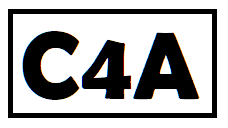Scientific Notation Converter
What is Scientific Notation?
Scientific notation is a method of expressing numbers that are too large or too small to be conveniently written in decimal form. It is commonly used in science and engineering to handle very large or very small numbers efficiently. In scientific notation, a number is written in the form \(a \times 10^n\), where \(a\) is a number between 1 and 10 (not including 10), and \(n\) is an integer.
Why Use a Scientific Notation Converter?
A Scientific Notation Converter helps you quickly and accurately convert numbers into scientific notation, scientific E notation, and engineering notation. This tool is particularly useful for students, scientists, and engineers who frequently work with large or small numbers. It ensures precision and reduces the risk of errors that can occur when manually converting numbers.
Features of Our Scientific Notation Converter
- Easy to Use: Simply enter your number or expression, and the converter will do the rest.
- Multiple Formats: Convert numbers into scientific notation, scientific E notation, and engineering notation.
- Accurate Results: Get precise conversions every time.
How to Use the Scientific Notation Converter
Using the Scientific Notation Converter is straightforward. Just follow these steps:
- Enter the number or expression you want to convert in the input field.
- Click the “Convert” button.
- The results will be displayed in various notations.
Examples of Scientific Notation
Here are some examples of how numbers are converted into scientific notation:
- 545^10: The expression \(545^{10}\) evaluates to \(5.45 \times 10^{23}\).
- 0.000000001: One billionth can be written as \(1 \times 10^{-9}\).
- 123456789: One hundred twenty-three million four hundred fifty-six thousand seven hundred eighty-nine can be written as \(1.23457 \times 10^8\).
Benefits of Using Scientific Notation

Scientific notation offers several benefits:
- Clarity: Makes it easier to read and compare very large or very small numbers. For example, comparing \(1.23 \times 10^{23}\) and \(4.56 \times 10^{21}\) is much simpler than comparing 123,000,000,000,000,000,000,000 and 45,600,000,000,000,000,000.
- Precision: Helps maintain precision in calculations involving large or small numbers. Scientific notation minimizes rounding errors and maintains accuracy throughout calculations.
- Standardization: Provides a standardized way to express numbers in scientific and technical fields. This standardization facilitates communication and consistency across different disciplines.
Advanced Examples
Let’s explore some more advanced examples to illustrate the utility of scientific notation:
- Avogadro’s Number: Avogadro’s number, which represents the number of atoms in 12 grams of carbon-12, is approximately \(6.022 \times 10^{23}\).
- Planck’s Constant: Planck’s constant, a fundamental physical constant, is approximately \(6.626 \times 10^{-34}\) joule-seconds.
- Speed of Light: The speed of light in a vacuum is approximately \(3.00 \times 10^8\) meters per second.
Mathematical Representation
Mathematically, a number \(N\) in scientific notation is represented as:
\[ N = a \times 10^n \]where \(1 \leq |a| < 10\) and \(n\) is an integer.
Scientific E Notation
Scientific E notation is a variation of scientific notation where the “times ten raised to the power of” is replaced with “E”. For example, \(1.23 \times 10^{23}\) can be written as \(1.23E23\).
Engineering Notation
Engineering notation is similar to scientific notation but the exponent \(n\) is a multiple of 3. This makes it easier to relate to metric prefixes. For example, \(1.23 \times 10^{24}\) in engineering notation is \(1.23 \times 10^{24}\) (tera-), while \(1.23 \times 10^{23}\) is \(123 \times 10^{21}\) (giga-).
Conclusion
The Scientific Notation Converter is a valuable tool for anyone working with large or small numbers. Whether you’re a student, scientist, or engineer, this converter simplifies the process of converting numbers into scientific notation and other formats. Try it out today!
Follow us on Facebook for more updates!
Contact us at office@calculator4all.com
